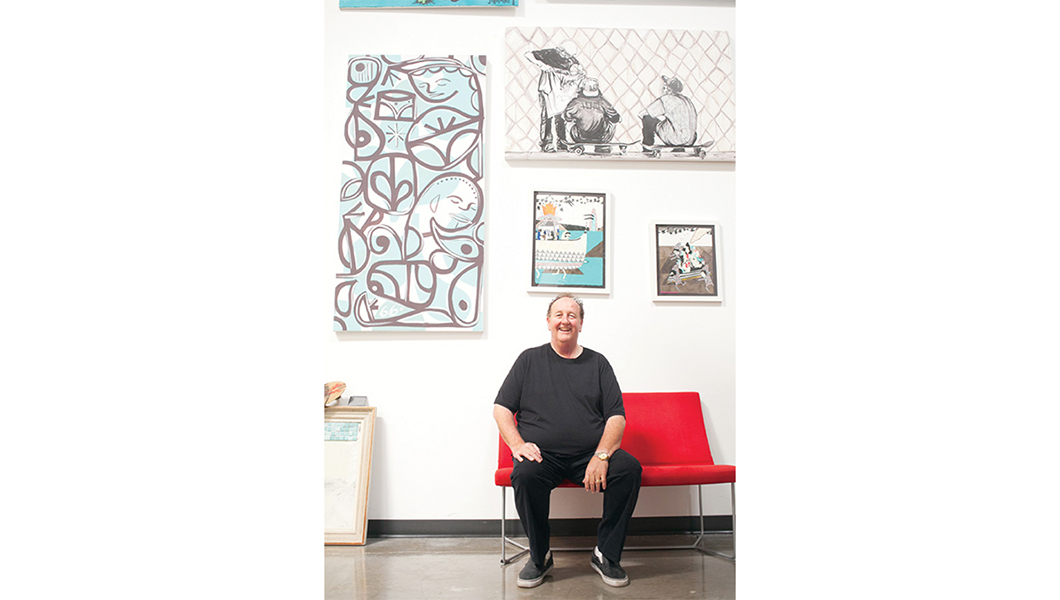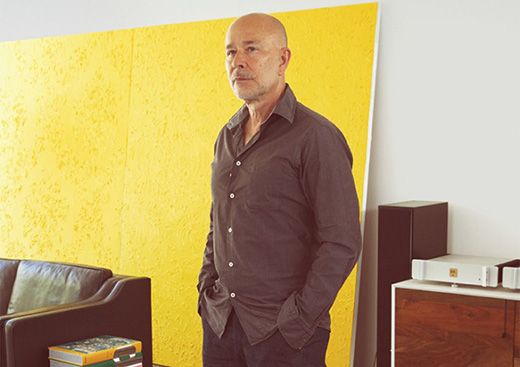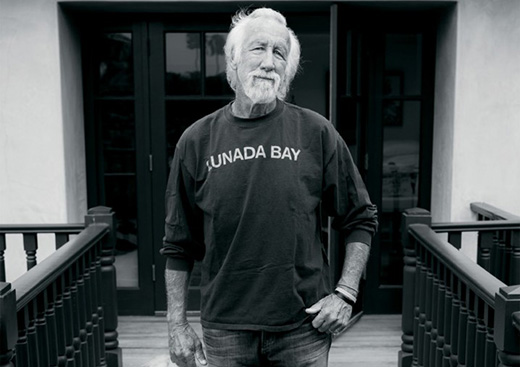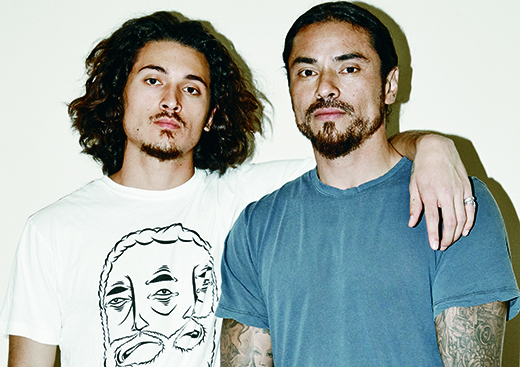It never rains in Southern California, and there are always a pair of Vans on someone’s feet. It sounds like a long-winded folk song by a sun-kissed guitar strummer on the Venice Boardwalk, but it’s really an ethos that embodies the spirit of those who call the Left Coast home. Much like the temperature here that rarely fluctuates, so too stands the resiliency of the steadfast and legendary shoe company that was founded by Paul Van Doren back in 1966. Having transcended the realm of footwear to become a cultural icon, the company has inevitably had to change to accommodate the modern world. But there are certain aspects of Vans that remain as recognizable as the Hollywood sign. The main thing? The Sidestripe.
To understand the staying power of one of the most distinctive contrasting elements in all of footwear is to know the history of the brand. The original intentions of Paul Van Doren, his brother Jim Van Doren and longtime friend Gordon Lee were to right the sinking ship of a factory in Gardenvale, California, that was owned at the time by Randy’s—a Boston-based shoe manufacturer best known for outfitting Boston Celtics legend Bob Cousy. In just eight short months, the fledgling factory was doing better than its eastern cousin. Thus, on March 16, 1966, at 704 E. Broadway in Anaheim, the partners opened up the first store of their own. At that point, there were only three companies manufacturing vulcanized footwear in the U.S.—Randy’s, Keds and Converse.
Steve Van Doren, son of Paul, remains an integral part of the operation despite the company’s sale to the banking firm McCown De Leeuw & Co. back in 1988. His passion for Vans is hard to ignore, and his knowledge of the inner workings of the brand makes him a footwear encyclopedia of sorts. And for him, it all starts with the Sidestripe—which debuted in 1977 on a new sneaker identified then simply as “Style 36.” (It’s now known as the Old Skool.) “The Sidestripe is a wavy line beginning in the front of the shoe below the eyestay lace area and ending at the back counter area of the shoe. It followed the stitch line of the padded color of the Style 36,” explains Van Doren. “The navy suede and the light blue canvas was an excellent-looking shoe. I was really excited when it first came out, because it was more durable. Also, before that we did not have our own identifying design, and this was it! My father wanted to create a unique design that would identify the shoes as Vans. He always had a pencil in his hand and was always drawing or doodling simple sketches on a notepad.”
While Vans maintain a certain “relaxed” connotation thanks to their Southern California roots, as well as the earliest customers who flocked to the company, the Sidestripe’s origins are similar to those of other sneaker imprints. “You can see it from far away, [and it] stands out from all other shoes,” says Van Doren. “Skateboarding shoes back in the ’70s, ’80s and ’90s all looked the same, but if an athlete wore an Old Skool or Sk8-Hi you could spot it right away.” Brand recognition from afar is what footwear is all about.
One could argue that Stacy Peralta did for Vans and skateboarding what Michael Jordan did for basketball and Nike. Simply put, he became a role model for kids to emulate. “Stacy Peralta was the very first skateboarder to wear Vans,” says Van Doren. “From there, every skateboarder wore them, and then we came out with the high-top version, the Style 38, and the Sk8-Hi with a similar Sidestripe. Every well-known skater in the world wore one or the other during the ’80s and ’90s. If you were to watch the movie Bones Brigade, you would see every rider donning the Sidestripe.” From there, Vans and their signature design would go on to permeate other facets of youth lifestyle. “BMX riders immediately took on the Old Skool’s added benefits of padded materials and unique customization options,” adds Van Doren. “Today, I see a lot of musicians, artists, sneaker fans and car and motorcycle enthusiasts making the Old Skool their own.”
Very rarely does a brand get to keep its counterculture placard while at the same time enjoying fiscal and critical success. Yet Vans continue to carry an underground appeal that allows wearers to feel there’s a universal connection among them. “I would say Vans fans are expressing their individuality and personal style,” Van Doren says. “They like their product to be different, and Vans allows them that individuality and offers a heritage of good-quality products. The Sidestripe has represented authentic Vans branding for over 37 years.”
With nearly 50 years of success under their belt, there’s an anecdote— that just so happens to be true—that illustrates perfectly why Vans continue to be as beloved now as they were back in 1966. As the story goes, the first people to own Vans were each given a pair on an “honor system” of sorts, after Paul Van Doren and his associates had “forgotten to maintain a cash reserve to provide change to their customers.” “All 16 did come back,” says Van Doren. “15 of them by the next day, and the last was [paid for] by a lady a week later when she came home from a trip. It basically comes down to the trust and passion that is the foundation of our brand. My dad and his partners were trying to start a business [where] you put trust in your workers and customers. The company guaranteed its products because we trusted we made great shoes. The customer, by using our product, put trust that the American-made product they saw was good quality. People believing in other people is a very valuable idea. We had to prove we made great shoes, and counted on our customers to help tell our story to their friends. On the wall of our stores, we had a sign 8 feet long that said ‘Tell A Friend.’ From the first day the founders believed that our customers were our Number 1 focus, and we needed them to believe in our brand.”
—





